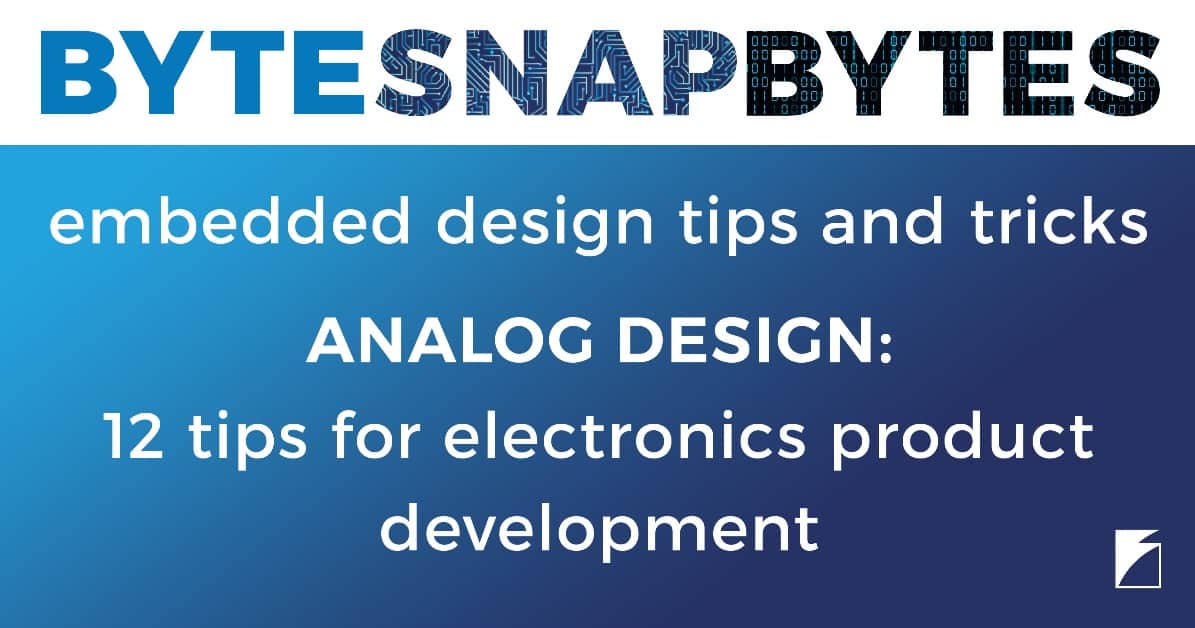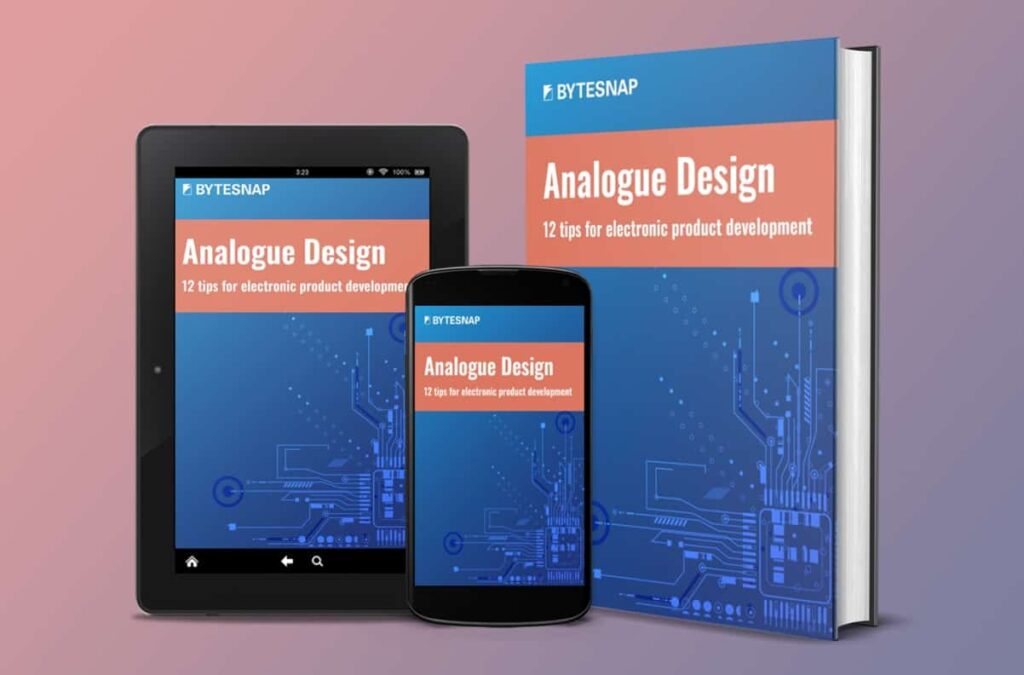Analog Design – 12 tips for Electronic Product Development
ByteSnapBytes is our part of the blog where we look at best practice development for engineers designing embedded electronics and software.
Here, we take a closer look best practice tips for analog design.

Analog Design – Avoid Common Pitfalls
In our modern digital age, analog design skills are often neglected. Though analog is rooted in Ohms Law of 1827, today’s IoT driven world remains analog and these specialist skills are more important than ever for electronics design teams.
Adding analog circuitry to a design can be daunting for the digital engineer.
So, our engineering consultants here at ByteSnap have put together a handy guide to help you avoid some common pitfalls.
Analog Design – 12 tips for Electronic Product Development
1 Filter sensitive analog power nets
Voltage rails used for sensitive analog circuitry should be clean and low noise.
For mixed-signal PCBs, the switching of digital components and voltage regulators leads to high frequency noise on power rails. Without filtering, this can be coupled into analog components and affect the accuracy and stability of the circuit. Using passive low-pass filtering is a simple way to reduce high-frequency noise on the analog Vcc power rails.
If the components you are powering are low current, then a series resistor and shunt capacitor circuit may be used. Otherwise, use an inductor/ferrite and capacitor combination instead. Each of these circuits will block high-frequencies (i.e. noise) but allow low frequencies (i.e. the current to power the analog component).
A mix of capacitor values – such as 100nF, 10nF and 1nF in parallel – can be used together to create a low-pass filter which will operate effectively over a wider bandwidth.
2 Filter analog signals
Sensitive analog signals on mixed-signal boards should be filtered. Low-pass filters using ferrites and capacitors will remove high frequency components often caused by digital switching noise, which otherwise could be coupled into analog integrated circuits.
It’s important that the capacitor value and ferrite specification create a cut-off frequency which retains the target analog signal whilst removing high frequency noise.
If the analog signal goes to the input of an ADC then the sampling frequency should be more than double the cut-off frequency of the low-pass filter. This ensures the ADC measurements do not suffer from aliasing.
3 Filter digital signals on mixed-signal components
On mixed signal boards, analog components such as ADCs and DACs also have digital connections such as communications interfaces.
Noise may be coupled from these digital signals to the analog circuitry inside the chips. One method of reducing this is by adding ferrites or resistors on the digital lines to the ADC or DAC. This helps to slow the edges of the digital signals and reduces the high-frequency noise.
Naturally resistor or ferrite specifications should be considered carefully with respect to the rise/fall time required by the particular digital signals. The signal edges may only be slowed so far before signal integrity and timing can become worsened.
An additional consideration for digital signals around mixed signal ICs is that the digital PCB traces should be routed in a way as to keep them separate from analog signals – nor should they pass underneath analog components.
A related concept is that if using a digital component, such as a comparator in a mixed signal-design, it can be advantageous to select a part which is no faster than you require.
A very fast comparator would have a sharp rise time which would contain more high-frequency harmonics and noise (which could couple themselves into analog tracks and components) than a part with a slower rise-time would.
4… download our eBook “Analogue Design: 12 tips for Electronics Product Development” here for the full guide on development success
Download the guide: Analog Design – 12 tips for Electronic Product Development

How can ByteSnap help you today?
From start-ups to blue chips, ByteSnap’s electronic design engineers are enabling companies to stay a step ahead by providing them with bespoke solutions. Maintain your competitive edge – contact us today and let your business be among them!




